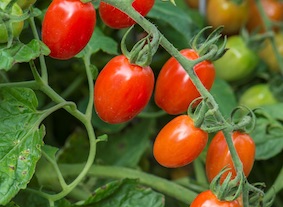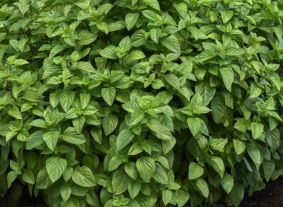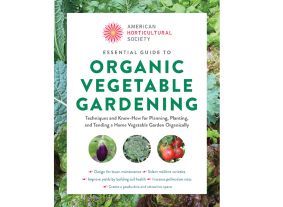Tomatoes and the Victory Garden 2.0
Views: 1947

Tomatoes is next topic in the new Victory Garden 2.0 blog series from the National Garden Bureau (NGB). The series has become so popular and so needed by new gardeners that it has grown in length (way beyond the original four posts!) and also content type. The latest edition about all new gardeners’ favorite veggie—tomatoes—is written in Q&A form, with garden industry experts answering 15 of the most asked questions about tomatoes.
As I have done with the previous NGB topics, I’m including some of their tips and comments below that I have experience with, and I’m expanding a bit with my personal recommendations. The questions I’m including below are ones that I feel are most important for new gardeners at the beginning of the growing season.
What’s the difference between determinate and indeterminate tomatoes?
Think of it like this: Determinate tomatoes grow to a determined size and then stop. Indeterminate tomatoes grow indefinitely, at least in the span of a gardening season. Determinates will grow into the shape of a bush, set their flowers mostly all at once, and then give you fruit all at once, or at least during a short, 3-5 week period. Also, if you’re looking to grow tomatoes in a container on your deck or porch, buy a determinate tomato.
Indeterminate tomatoes are best for in-ground gardens as their continued growth would be too unwieldy for a pot. They will flower all season, and thereby produce tomatoes all season.
Can they survive if you plant them too early in the season?
Tomatoes like the air and the soil to be warm, at least continuously above 50F. Otherwise their growth is held until the temperatures warm. They can’t withstand temperatures 32F or colder. If you’re worried about a cold snap with your young tomatoes, look into using a cloche, which could be as simple as a gallon jug with the bottom cut out and the whole thing placed over the plant. Or, just hold your plants in your garage or protected porch until the danger of frost is gone. Basically, plant them later than you want to.
I started seedlings indoors. Now what?
Acclimate, or harden off, your seedlings! Young tomatoes seedlings don’t like cold. Take them from your warm home and put them out on your covered porch or a cooler garage out of direct sunlight for an hour or so. The next day, lengthen that time, and so on until you are gradually increasing length of time outside (eventually overnight!) and how much sun they are experiencing. Give your plants a good week or so to get used to the weather. Like you’d give yourself lots of time to get into the ocean for the first time in summer.
How do I plant my tomatoes properly?
Take the first set of leaves (first along the stem from the soil level) off the stem. Then dig a hole deeper than the length of that portion of the stem. When planted, that area where the leaves were is completely buried. New roots will grow from those wounds, and that will stabilized the plant and help it take up more water. Plant is a very-sunny-all-day location. And throw a shovel’s worth of compost either in that hole or around the plant.
What are the best tomatoes for canning? For salsa?
The NGB expert who answered this question said Roma tomatoes for both—and I agree! Romas tend to have more “meat” and less juice. In a salsa that means more chunky tomato goodness and less watery mess in the bowl. For canning, meaty tomatoes means less squishiness in the jar. I think they hold up better to the canning process.
Those are the tomato basics that should help you choose the tomato types/varieties you want, get them planted correctly in the garden and at a time of year where you won’t have to worry about freezing temperatures killing off your plants. I’ll follow up with a Tomatoes 201-type piece that will basically answer the question, “They’re in the ground and not dead; now what?”
Meet Ellen Wells
When you’re raised on a farm, you can’t help but know a thing or two about gardening. Ellen Wells is our expert on edible gardening.…
Ellen's Recent Posts

Everleaf Lemon Basil






